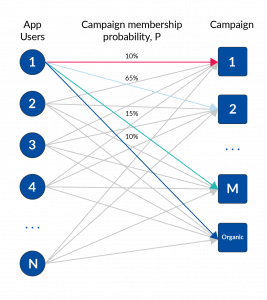Hello! In our new newsletter, we mentioned Apple’s latest announcements for developers from WWDC.
- The highlight was on XCode Cloud, which enables developers to improve and work on their apps faster.
- Built-in concurrency support for Swift will be available to anyone, but now only in the beta version.
- They’re planning to revolutionize 3D writing with the Object Capture feature.
- Google announced to remove Android Ads Tracking from the users who restrict app tracking, and lastly, the iOS 14.5.1 update has arrived to fix some bugs related to the Apple ATT. To read more, you can visit our previous newsletter.
Today, we will bring you the latest discussions and news on Apple’s privacy issues.
After Apple’s enforcement regarding users’ data privacy, apps started to generate new ways to understand their users for a better user experience and more to-the-point marketing. The strongest solution now focuses on fingerprinting. Some apps found the solutions as “bugs of the enforcement,” while others found them promising.
After that, we will go over the latest situation with the opt-in rates for ATT.
Are Apple’s privacy restrictions unclear?
We already know that using fingerprints to identify the users or the device is now specifically allowed. Some apps came up with a solution: “probabilistic attribution.” It is used to measure engagement with mainly these metrics:
- Anonymous user behavior in the app,
- Install Time,
- Click Time,
- SDKAdnetwork Data
Those restricted data help apps measure engagement rates

With probabilistic attribution, apps can directly download and use the information for a specific campaign without using personal information about a user. This means the data will not be matched with an IP address.
While apps that use fingerprinting for the ATT update are being rejected for using “algorithmically converting devices and usage data to create a unique identifier to track the user,”
In the rejection mail from Apple, the apps can see which commands caused the problem. Some examples:
- local collation identifier
- local country code
- Local Grouping Separator
When the enforcements are not explained extensively, it creates time and effort waste and confusion for the apps. At this point, app developers and marketers expect more clarity from Apple. Most of the company believes fingerprinting will not fade as quickly, but it still cannot reach a consensus about what to do. Companies are trying to find out what the limitations and the borderlines are. Probabilistic attribution is one of the solutions for some measurement companies.
The debate starts here: some say those solutions are short-sided. In other words, they are valid until they are warned to change the data collection. From another perspective, apps are only trying to test the cases to understand the limitations.
Nicole Perrin, the eMarketer analyst, is underscoring the importance of Apple following the apps and informing them when the updates are out of line, so as not to create more confusion. To her, this is the only way to make the enforcements meaningful and useful. Other companies will follow an equal competition environment if this happens, and the mobile marketing field will be more balanced.
Google Is Moving Forward With Privacy Policies
After Apple, Google is moving forward with a more privacy-oriented experience for its users.
We wrote that Google’s privacy policies would be valid in a year. There is Android Ads ID removal for the users who disabled app tracking.
Now, Google is accelerating its work. The previous week, the firm launched its second beta for Android 12, a privacy dashboard that allows users to learn about which data the app is reaching, such as the user’s camera, location, or outside app activation of the user’s Android.
Mobile marketers are searching for alternatives, including consolidation with other apps to increase internal marketing capacity.
While it’s too early to say how many users will restrict app tracking, Apple’s ATT can give us some probable insights. (check below)
For further information, you can check out the video below:
What’s the Latest ATT Opt-In Situation?
After the day that Apple’s ATT restrictions arrived, on April 26, Flurry reported the statistics weekly. When iOS 14.5 first launched, the percentage of active mobile users who allowed apps to track was 31%. Even after it sharply declines, it keeps increasing. We interpret the situation as more apps get used to the new regulation and learn how to create better prompts to explain how the data will be used; the users’ opt-in rate increases.
When it comes to the active mobile users who restrict app tracking, there has been a slight decrease in the rates since the first day, but it started to increase in the last two weeks.
Apps are taking their time to prepare the best prompt to ask users more properly to track their behavior and why. You can check out some tips from our previous newsletter mentioning how to make a good ATT prompt.
Have You Verified Your Company Through Facebook and Google Ads?
To launch your campaign with paid marketing on Facebook and use Google Ads, you must verify your company. Since it’s still pandemic, the process is taking almost 48 hours. To run your campaigns successfully, don’t delay it!
To be updated about the latest news about digital marketing, scroll down to subscribe to our newsletter.
